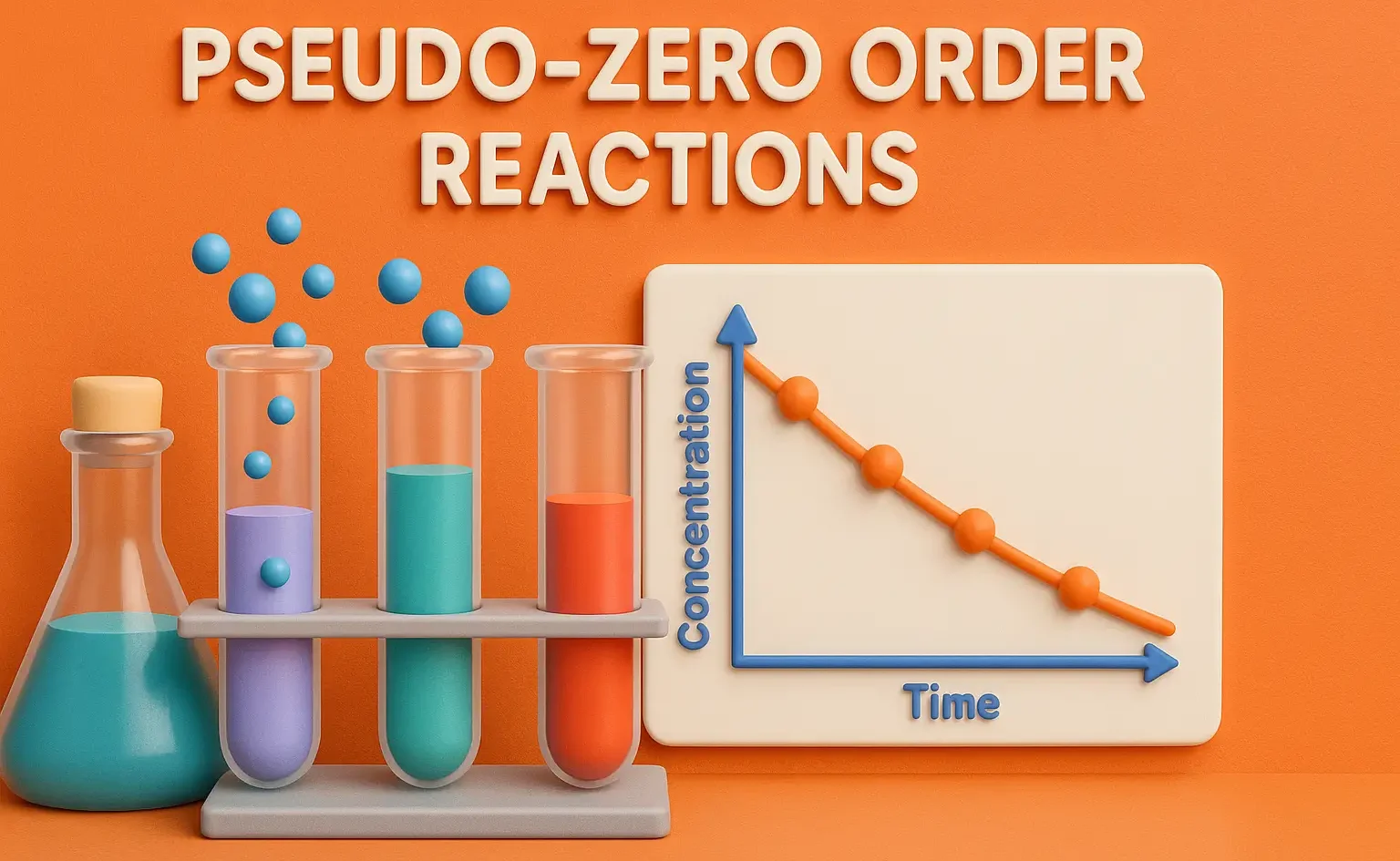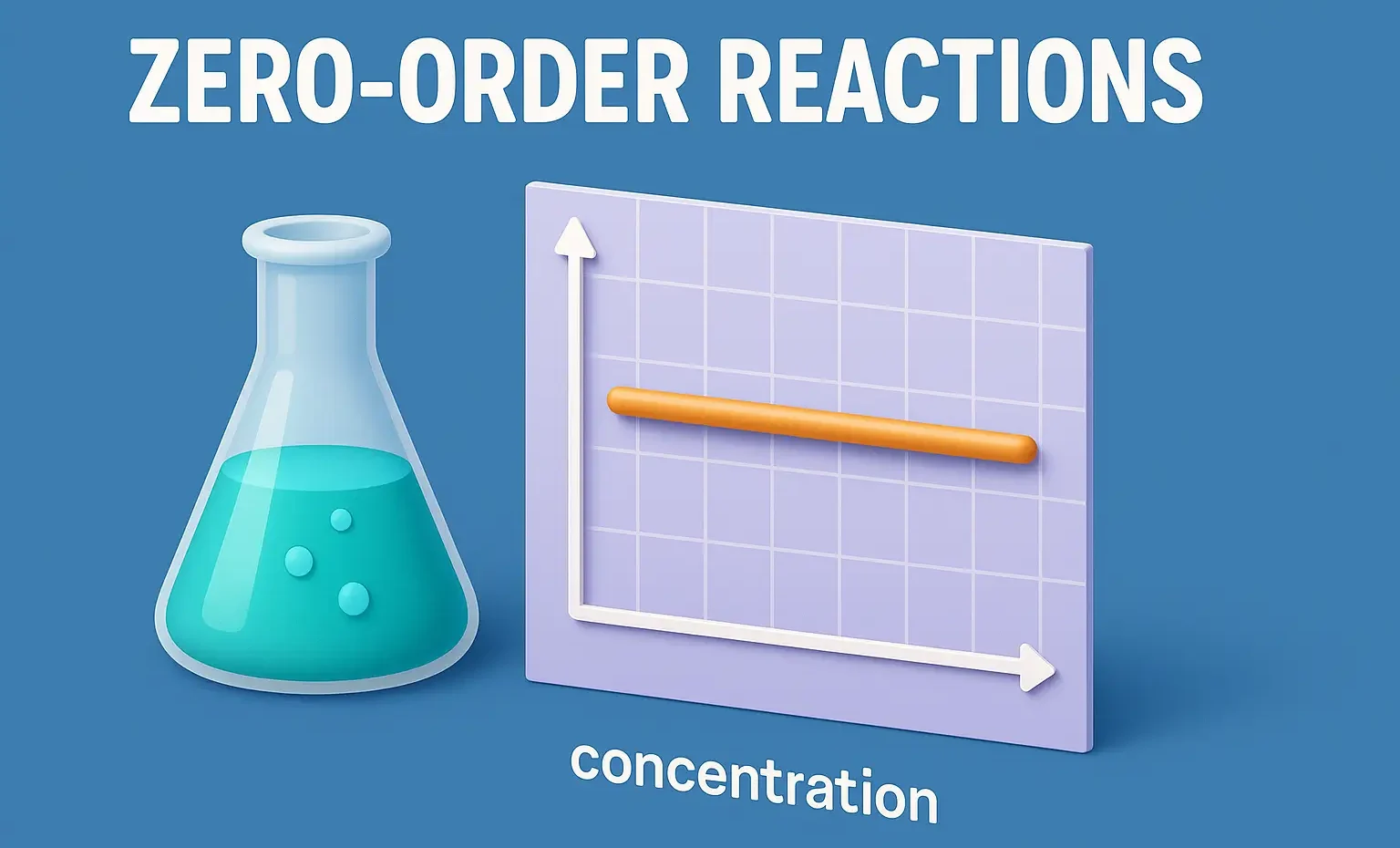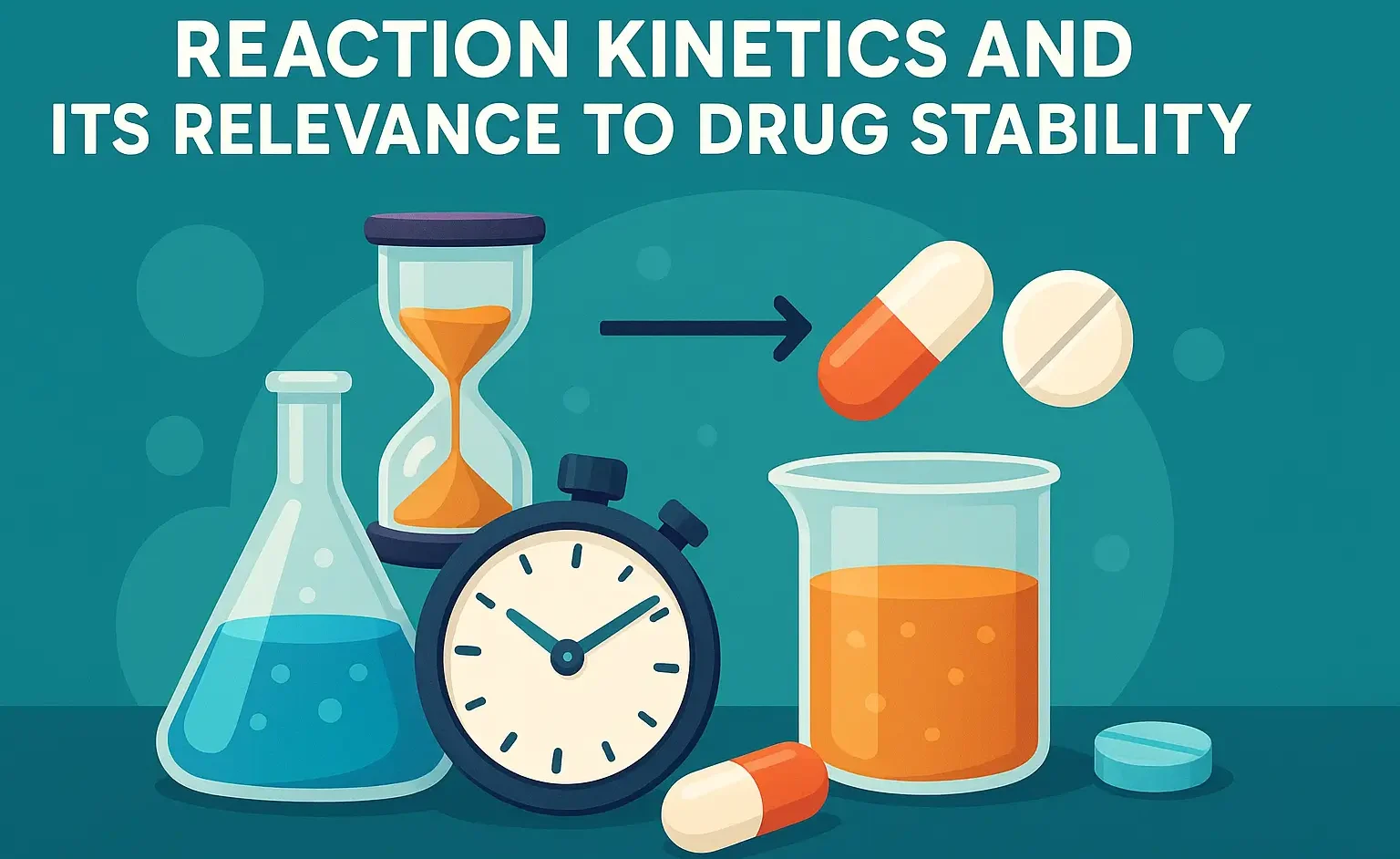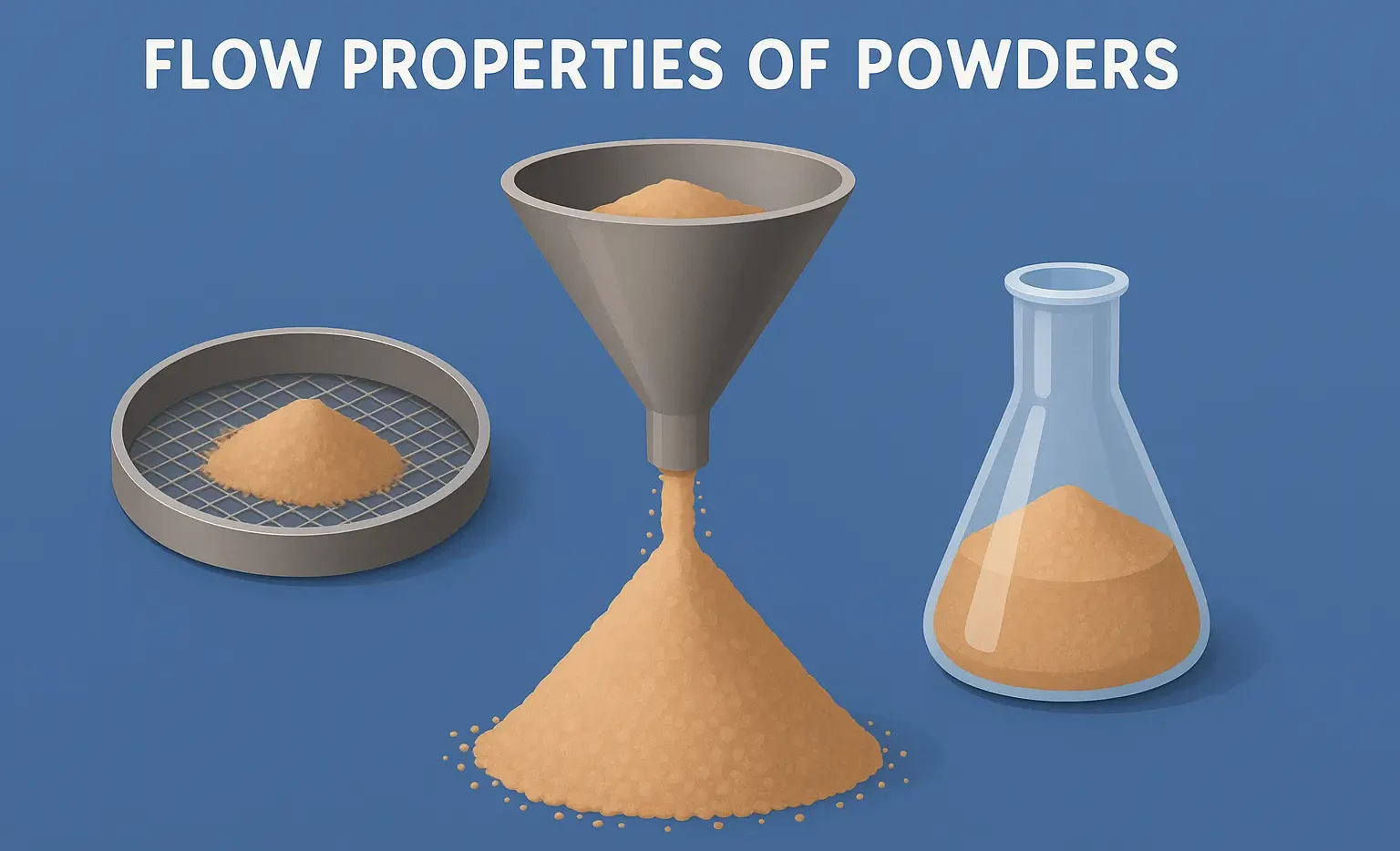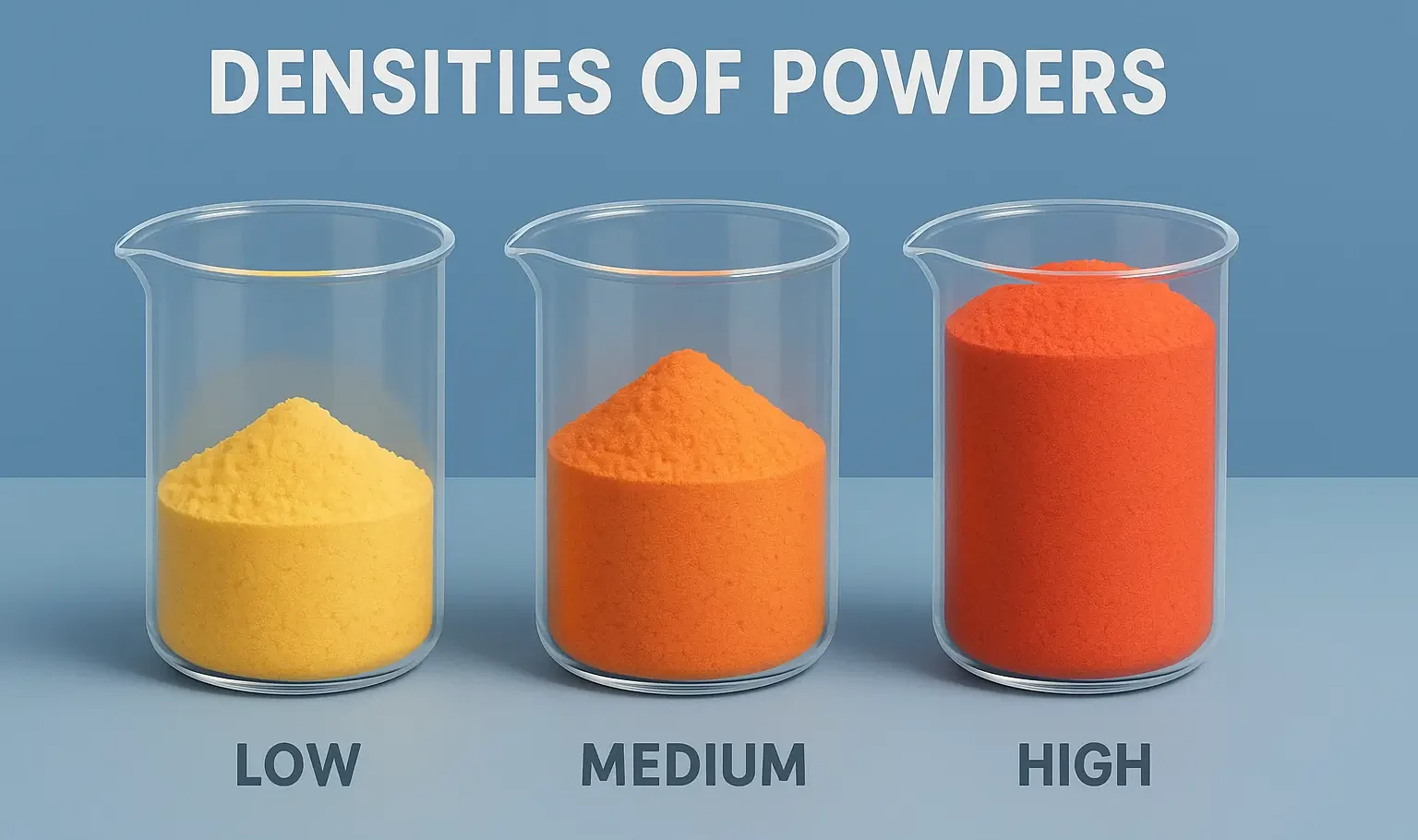First-Order Reactions
First-Order Reactions are vital in drug stability, absorption, and pharmacokinetic studies. Definition: Rate of degradation is proportional to the concentration of the drug. Rate law: Derivation: Separate variables: $\text{Rate} = -\frac{d[A]}{dt} = k[A]$ Integrate both sides: $\frac{d[A]}{[A]} = -k \, dt$ Integrated form: $\int_{[A]_0}^{[A]} \frac{d[A]}{[A]} = -k \int_{0}^{t} dt$ $\ln [A] – \ln [A]_0 = … Read more


